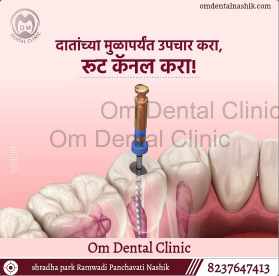
A root canal is a dental procedure that helps t...

A root canal is a dental procedure that helps treat and save a tooth that has become infected or severely damaged. Here's how a root canal can help: 1. Relieves pain and infection: - If a tooth becomes infected due to deep decay, trauma, or a crack, the infection can spread to the inner pulp (nerve) of the tooth, causing severe pain and swelling. - A root canal procedure removes the infected or inflamed pulp, helping to eliminate the source of the pain and infection. 2. Preserves the natural tooth: - Without a root canal, the only option may be to extract the tooth completely. A root canal allows the dentist to clean out the damaged pulp and seal the tooth, preserving the natural tooth structure. - Keeping your natural tooth is better for your oral health and function compared to an extracted tooth that needs to be replaced with a bridge or implant. 3. Restores tooth function: - Once the root canal is complete, the tooth can be restored with a filling or a crown, allowing you to continue using the tooth for chewing and biting. - This helps maintain your bite alignment and prevents other teeth from shifting out of place. 4. Prevents further infection: - If left untreated, the infection in the tooth can spread to other parts of the mouth, causing more serious health problems. - The root canal procedure removes the infected tissue, preventing the spread of the infection. Overall, a root canal is an important procedure that can save a badly damaged or infected tooth, relieve pain, and preserve your oral health in the long run. It's a common and effective treatment option.
Keywords
Subscribe for latest offers & updates
We hate spam too.


